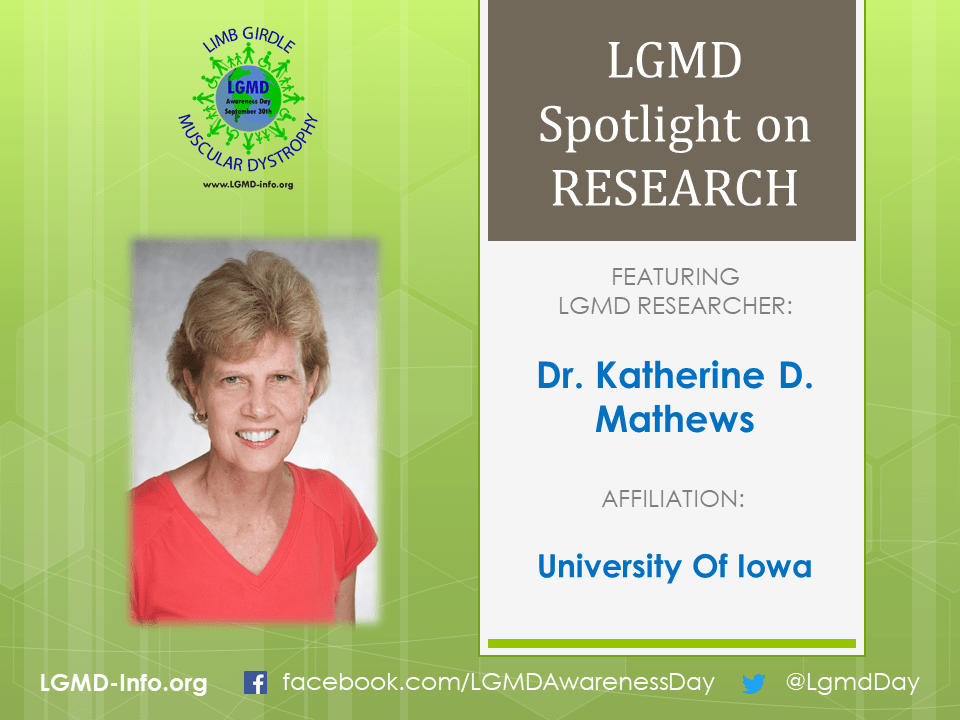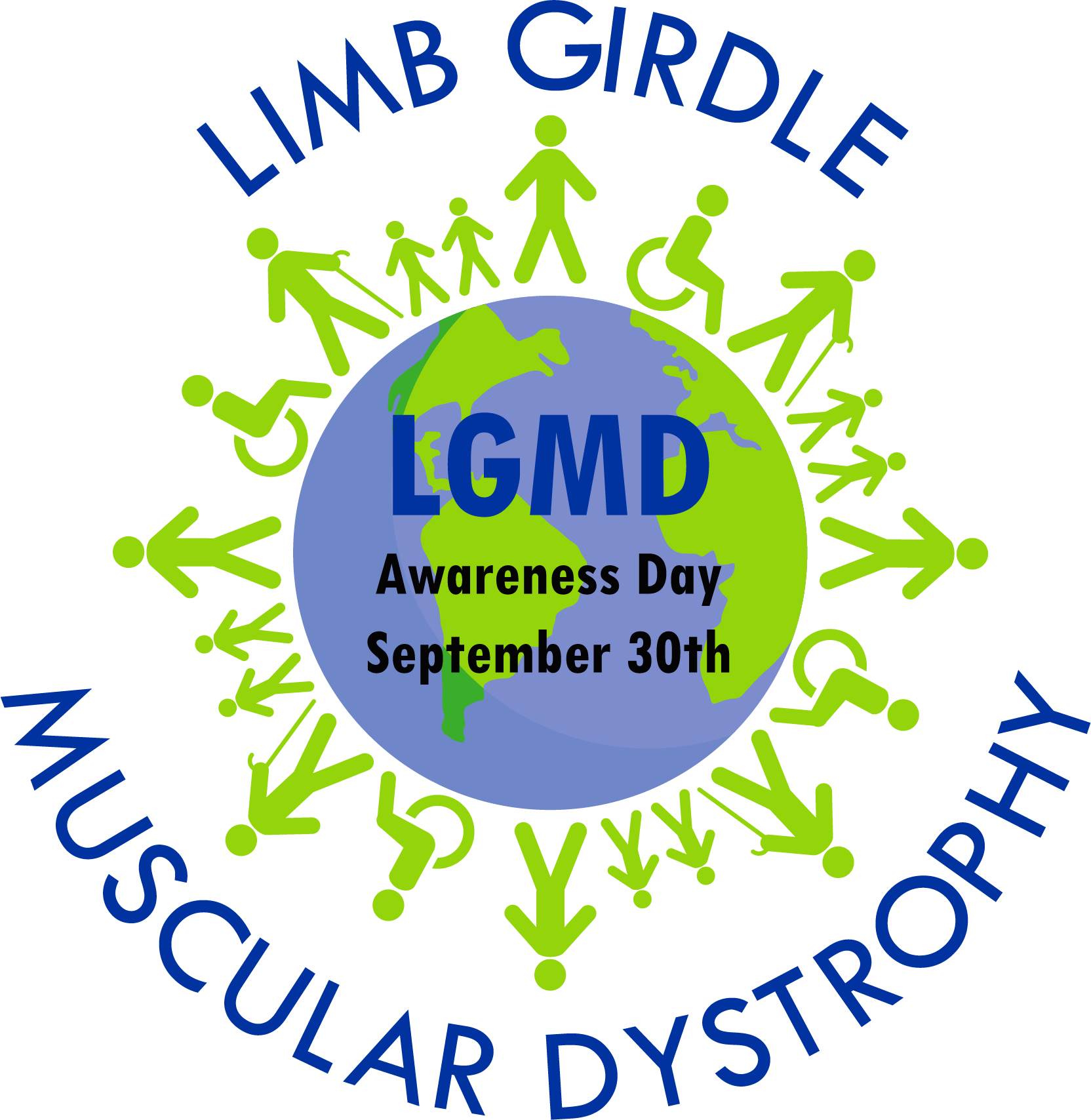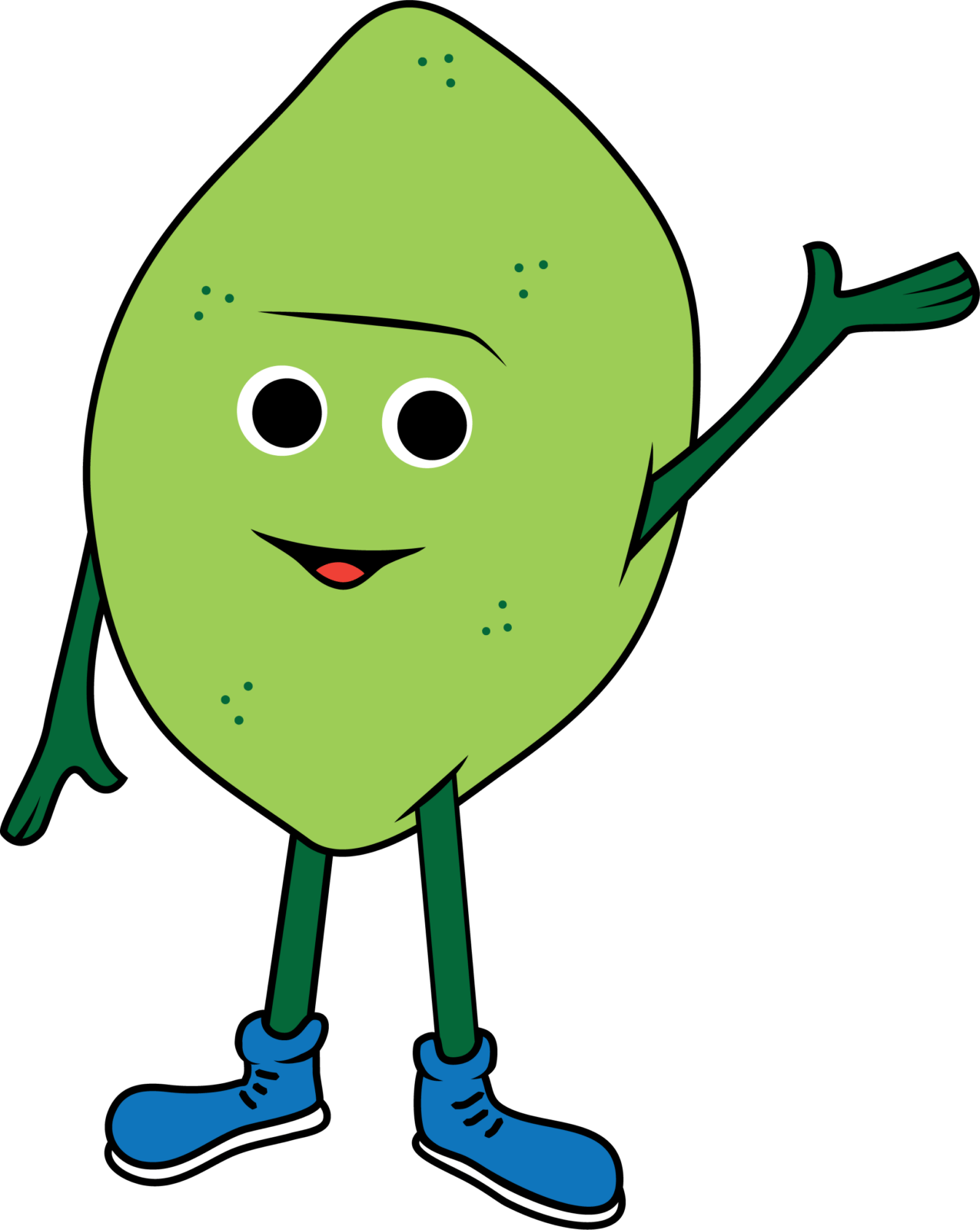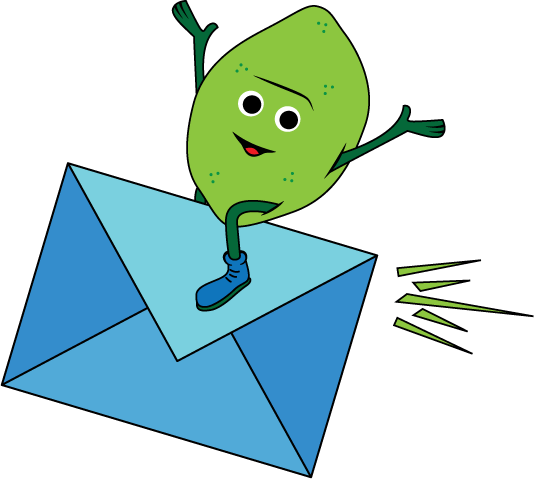LGMD RESEARCHER: Katherine Mathews
LGMD Spotlight Interview on Research

LGMD RESEARCHER: Katherine D. Mathews
Affiliation: University Of Iowa, Departments of Pedaitrics and Neurology
Role or Position:
Professor, Departments of Pediatrics and Neurology
Vice Chair of Cinical Investigation, Department of Pediatrics
What education and training did you have to arrive at your current position?
I completed residency training in pediatrics, neurology and child neurology, then completed a fellowship in genetics. My basic science research focused on the genetic basis of muscular dystrophy. There was a logical transition to a clinical focus on muscular dystrophy later in my career.
What led you to follow a career in research and in studying muscular dystrophy in particular?
The interest in research came from a desire to contribute to improving care on a broader level than only for the patients I see in clinic. When I began my career, we didn’t know the genetic or molecular basis for most muscular dystrophies, so had no logical basis for developing treatments. Initially, happenstance and chance led to the focus on muscular dystrophy research, but the more I understood the diseases and got to know the patients, the more committed I became to this group of disorders.
What topics are you studying?
I have a particular focus on clinical aspects of the dystroglycanopathies, which encompass both LGMD and congenital muscular dystrophy. I am also part of a collaborative effort supported by the CDC to understand the epidemiology of all muscular dystrophies. Our team is part of the LGMD GRASP consortium and involved in other collaborative natural history studies. Finally, I’m involved in a number of industry-sponsored clinical trials investigating potential treatments for neuromuscular diseases.
How will your work help patients? Is it more scientific in nature or might it become a treatment for LGMDs or MDs in general?
My work on the dystroglycanopathies should help provide the basis for designing future clinical trials and understanding the natural history of these diseases to better care for patients now. Similarly, the epidemiology work is important for understanding the natural history of different types of muscular dystrophy, and for companies considering designof treatment trials—they need to know how many patients there are to determine how to design a trial that is feasible and realistic. I hope that our teams’ efforts contribute to improved management for patients with muscular dystrophies.
What would you like patients and others interested in LGMD to know about research (your own projects and about the field in general)?
Patients need to understand that even answering simple questions about human beings is often slow work. This is particularly true for rare diseases. Humans are complicated and there are a lot of things that contributed to variation in outcomes, both genetic factors and non-genetic factors. In part because of this variablity, treatment studies need to be very carefully designed. It is likely that some treatment trials will not show benefit. the only treatment trial that is a true failure is one that fails to answer the question of benefit and safety. a treatment trial that demonstrates a certain therapy doesn’t improve outcomes is a successful trial—it allows us to move on to a different approach to treatment.
What inspires you to continue working in this field?
I feel very fortunate to interact with the patients, families and colleagues I meet through this work. They are a primary drving force. Secondly, the accelerating promise of meaningful treatments is exciting!
How can patients encourage you and help your work?
Participate in research as you are able. Be a well informed patient or research subject. Support ongoing funding in this field (NIH, MDA, disease-specific foundations, individual researchers). Talk to your federal senators and representatives about the importance of continued NIH support for research in general, in neuromuscular disease and in your particular disease. Tell your story.







